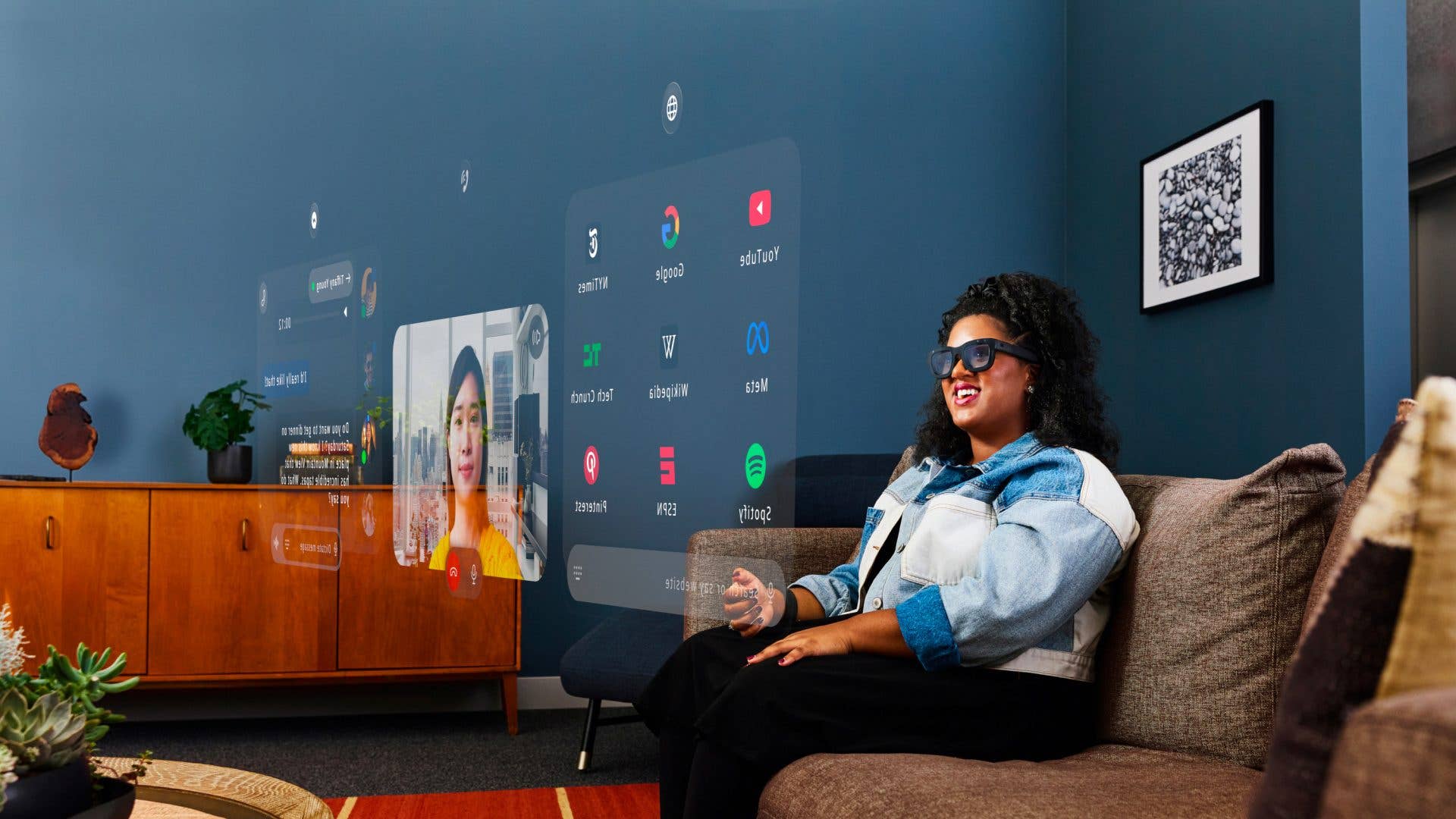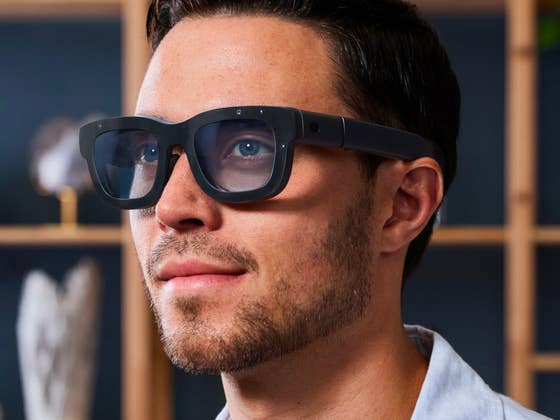The announcement provided a proper look at what the next-gen or the first consumer “holographic” AR spectacles from the Facebook parent could look like. At first sight, the Orion glasses appear thick and bulky. However, they are more than just your regular smart glasses such as the Ray-Ban Meta Smart Glasses (review).
What powers Meta’s Orion holographic AR glasses
The Orion is a polished prototype unit packed with micro-LED projectors that beam light into each side of the see-through lenses. Additionally, there is a set of cameras and sensors positioned across the frame and two temples, utilized for eye, head, and ambient tracking.
The lenses, made of silicon carbide, have a 70-degree field of view and waveguides to turn the light from the projectors into 3D holographic images. The resolution is unclear, but it is readable enough to support displaying and overlaying webpages and videos, as seen in a couple of exclusive hands-on videos.

Beyond the spectacles, Orion incorporates a wireless external processor puck that is almost half the size of many smartphones but thicker. This unit handles most of the graphics and computing processes before feeding them in and out of the glasses.
In addition to the puck, the Orion comes with a neural interface wristband that acts as a control. You’ll strap it on one of your wrists to enable controls via hand gestures. This can read actions like pinching your index and thumb for clicking and rubbing your thumb to your index to scroll.

The Orion runs on beta Meta AI software, and it was demonstrated that it can perform many of the generative AI functions available in the Ray-Ban Meta Smart Glasses, such as taking a picture of ingredients in your fridge and then suggesting recipes. Moreover, it should share most of the interface with Meta’s Quest VR and mixed-reality headsets.
When can you buy Meta’s holographic AR glasses?
Meta didn’t say when we should expect the finished product of the Orion to be ready. But based on the leaked roadmap, Meta plans to launch its first AR glasses by 2027, which is still a couple of years from now.
However, this might still happen at an earlier timeframe as Meta confirmed that the Orion is a prototype that is very close to a consumer-ready product. At the same time, other major competitors like Google and Apple are rumored to be working on their new smart glasses that will rival the likes of the Ray-Ban Meta Smart Glasses, although we don’t also know when are these going be arrive.
Do you think the next big thing in tech will be wearable like these Orion AR glasses? We want to hear your thoughts on this.
We mark partner links with this symbol. If you click on one of these links or buttons–or make a purchase through them–we may receive a small commission from the retailer. This doesn’t affect the price you pay, but it helps us keep nextpit free for everyone. Thanks for your support! Prices are based on the date of publication of this article and may be subject to change.




